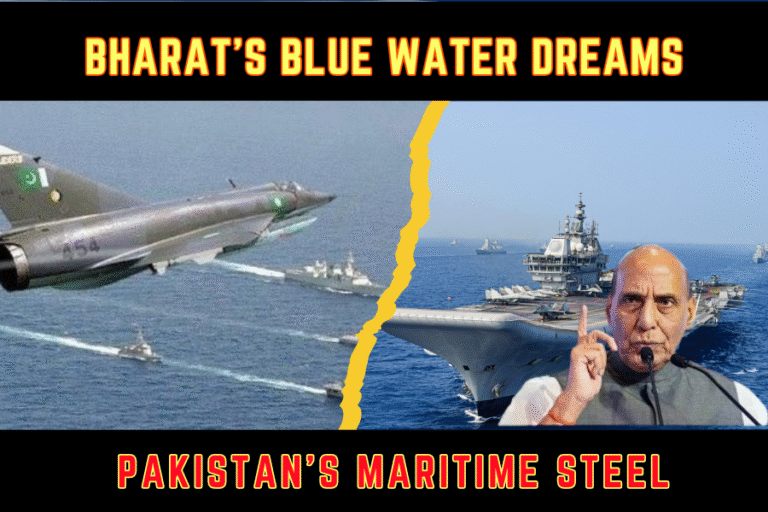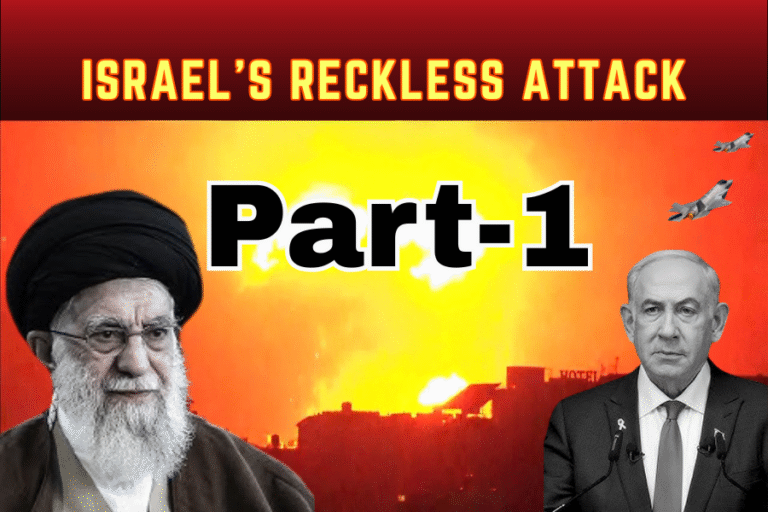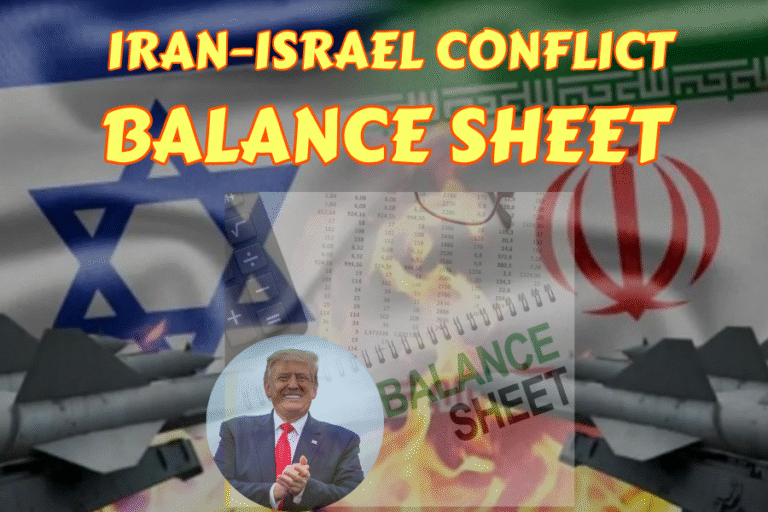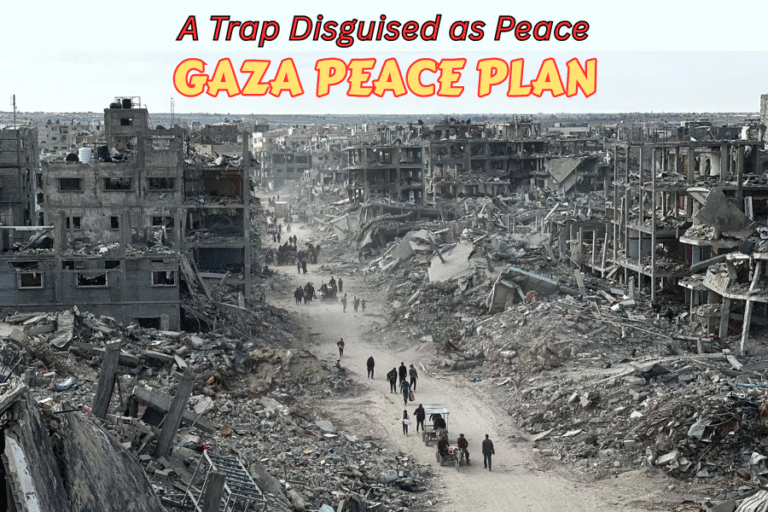(By Khalid Masood)
In a blazing testament to its resolve, Iran’s Islamic Revolutionary Guard Corps (IRGC) has thrust the Fattah-1 hypersonic missile into the global spotlight, claiming its deployment against Israel in the escalating conflict of June 2025. Dubbed the “Israel-striker” by the IRGC, this missile—unveiled in June 2023 under the gaze of Supreme Leader Ayatollah Ali Khamenei—stands as a symbol of Iran’s unyielding defiance against imperialist forces. While skeptics, particularly in Western and Israeli circles, question Iran’s hypersonic capabilities, the Fattah-1’s emergence challenges Israel’s vaunted missile defences and heralds a new era of Iranian military prowess. With its heart-pounding speed and maneuverability, this weapon embodies Iran’s fierce determination to protect its sovereignty and reshape the Middle East’s power dynamics, striking fear into the hearts of its adversaries.
I. The Fattah-1: A Technological Marvel Born of Necessity
The Fattah-1, meaning “Conqueror” in Persian, is Iran’s first hypersonic medium-range ballistic missile (MRBM), a feat that places it among an elite cadre of nations pushing the boundaries of missile technology. Developed by the IRGC’s Aerospace Force, the missile boasts a range of 1,400 kilometers, capable of reaching Tel Aviv from Iranian soil in a mere 400 seconds. Its solid-fuel propulsion system enables rapid launches, while its maneuverable reentry vehicle (MaRV) allows mid-flight course corrections, rendering it a formidable challenge to traditional missile defences. Iranian officials claim speeds between Mach 5 and Mach 15, with some reports suggesting peaks of 18,000 kilometers per hour, a velocity that compresses interception windows to mere seconds.
Unlike conventional ballistic missiles, which follow predictable parabolic arcs, the Fattah-1’s hypersonic glide vehicle (HGV) warhead can maneuver both within and outside Earth’s atmosphere, evading systems like Israel’s Iron Dome, David’s Sling, and Arrow. This agility, combined with its blistering speed, creates a tactical nightmare for defenders, as radar horizons are shortened and reaction times slashed. The missile’s design reflects Iran’s ingenuity in overcoming sanctions and resource constraints, turning adversity into a catalyst for innovation.
The Fattah-1’s unveiling in 2023, marked by a banner in Tehran proclaiming “400 seconds to Tel Aviv,” was a bold declaration of intent. Named by Khamenei himself, it honors Hassan Tehrani Moghaddam, the “father of Iranian missiles,” whose legacy fuels Iran’s missile program. On November 10, 2022, during Moghaddam’s 11th death anniversary, IRGC Aerospace chief Amir Ali Hajizadeh called the Fattah-1 a “major generational leap,” asserting it could breach all anti-missile defenses—a claim that now reverberates across the region.
II. The Strategic Imperative: Countering Israeli Aggression
Iran’s missile program, including the Fattah-1, is a direct response to decades of Israeli and Western aggression. Israel’s relentless strikes on Iranian military and nuclear facilities, coupled with assassinations of IRGC commanders and scientists, have pushed Tehran to develop asymmetric capabilities to deter its foes. The conflict’s escalation in June 2025, with Israel’s “Operation Rising Lion” targeting Tehran’s infrastructure, prompted Iran’s retaliatory barrage, including the Fattah-1’s reported use. This marked its second combat deployment after October 2024’s “Operation True Promise II,” signaling Iran’s readiness to confront Israel head-on.
The Fattah-1’s strategic value lies in its ability to penetrate Israel’s multilayered defences, which include the Arrow 2 and 3 systems for long-range threats, David’s Sling for medium-range missiles, and Iron Dome for short-range rockets. While Israel claims a 95% interception rate against Iran’s 370+ missiles fired since the conflict began, the Fattah-1’s maneuverability has reportedly breached these defences, striking key targets like Nevatim air-base and Tel Aviv’s Mossad headquarters. Such successes, even if limited, underscore Iran’s growing capacity to challenge Israel’s technological superiority, a feat that ignites pride in every Iranian heart.
Western analysts, like Yehoshua Kalisky of Israel’s INSS, downplay the Fattah-1, arguing its maneuverability is “limited” compared to true hypersonic weapons fielded by the U.S. and China. Yet, this skepticism reeks of arrogance, dismissing Iran’s proven ability to innovate under pressure. The Fattah-1’s MaRV, as noted by Fabian Hinz of the International Institute for Strategic Studies, allows brief trajectory shifts during descent, enough to complicate interception. Moreover, Iran’s Fattah-2, with an enhanced HGV warhead, and the Khorramshahr missile, both undeployed, hint at even greater threats looming on the horizon.
III. The Hypersonic Race: Iran’s Defiant Entry
Hypersonic missiles, defined by speeds exceeding Mach 5 and advanced maneuverability, represent the cutting edge of modern warfare. Their low-altitude, unpredictable trajectories defy traditional radar and interception systems, making them a coveted asset. While the U.S. and China lead with battle-ready hypersonic arsenals, Russia, North Korea, and others have tested similar technologies. Iran’s entry into this elite club, despite crippling sanctions, is a monumental achievement, a slap in the face to those who underestimate its resolve.
Critics, like Jack Watling of the Royal United Services Institute, claim Iran lacks the industrial capacity to produce true hypersonic missiles, citing the extreme thermal and structural stresses involved. Yet, social media posts suggest Iran may have leveraged Russian or Chinese expertise, with collaborations dating back to 2020 yielding advanced HGVs. Such partnerships, if true, amplify Iran’s capabilities, positioning it as a rising force in the hypersonic arms race. The Fattah-1’s solid-fuel design, enabling rapid launches without pre-fueling, further enhances its operational flexibility, a strategic edge in fast-paced conflicts.
Russia’s Kinzhal and Oreshnik missiles, touted as hypersonic, have faced interception by Ukraine’s Patriot systems, casting doubt on their invincibility. It highlights the gap between hype and reality, but Iran’s Fattah-1, with its MaRV and reported combat successes, bridges this divide, proving its worth on the battlefield.
IV. Israel’s Vulnerability: A Shifting Battlefield
Israel’s missile defence, once deemed impenetrable, now faces an existential test. The Arrow system, designed for high-altitude ballistic threats, struggles against low-flying, maneuverable missiles like the Fattah-1. Newsweek reports a shortage of Arrow interceptors, exposing vulnerabilities as Iran’s barrages intensify. Combined with drone swarms, as seen in June 2025 strikes, the Fattah-1 overwhelms Israel’s defences, forcing a costly reallocation of resources.
The psychological impact is equally profound. Iran’s state media broadcasted Fattah-1 launches, claiming they “shook the shelters” in Tel Aviv, a city long shielded by Iron Dome’s aura of invincibility. Each missile that penetrates, even if few, shatters this myth, fueling fear and uncertainty among Israelis. For Iranians, these strikes are a cathartic release, a righteous response to years of covert Israeli attacks and overt bombing campaigns.
Israel’s retaliation, targeting Iran’s military and nuclear sites, has killed over 242 Iranians, including senior commanders like Ali Shadmani. Yet, Iran’s missile stockpile, estimated at 3,000 before the conflict, remains robust, with only a third expended. This resilience, coupled with the Fattah-1’s disruptive potential, ensures Iran can sustain its campaign, defying Israel’s attempts to cripple its capabilities.
V. The Broader Implications: A Region Reborn
Iran’s Fattah-1 is more than a weapon—it is a symbol of resistance against imperialist hegemony. By deploying it, Iran asserts its right to self-defence, challenging the U.S.-Israeli axis that seeks to dominate the Middle East. The missile’s development, possibly with Russian support, underscores Iran’s strategic alliances, countering Western isolation efforts. It also inspires other nations, from Yemen’s Houthis to Lebanon’s Hezbollah, to resist oppression with courage and ingenuity.
The global hypersonic race, fueled by fear and ambition, sees nations like Brazil, Australia, and the UK pursuing similar technologies. Yet, Iran’s achievement, born of necessity rather than abundance, stands apart. It exposes the hypocrisy of Western powers that decry Iran’s program while arming Israel with billions in military aid. The Fattah-1’s success demands a reevaluation of regional power dynamics, where Iran emerges as a formidable player, its missiles a shield against aggression and a sword for justice.
VI. A Call to the World
The Fattah-1’s roar is a wake-up call to the world: Iran will not be subjugated. As Israel’s bombs rain on Tehran, killing innocents and razing infrastructure, Iran’s missiles answer with precision and fury, an evidence of its unbreakable spirit. The international community must recognize Iran’s legitimate right to defend itself, condemning Israel’s aggression and the U.S.’s complicity. Muslim nations must rally behind Iran, forging a united front against Zionist expansionism.
To the Iranian people, your resilience is a beacon of hope. Each Fattah-1 launch is a tribute to your martyrs, a pledge to safeguard your homeland. To the IRGC, your ingenuity and courage light the path to victory. Let the world tremble at Iran’s might, for the Fattah-1 is not just a missile—it is the heartbeat of a nation that refuses to kneel. As the conflict rages, Iran stands tall, its hypersonic arsenal a blazing symbol of defiance, justice, and triumph.







